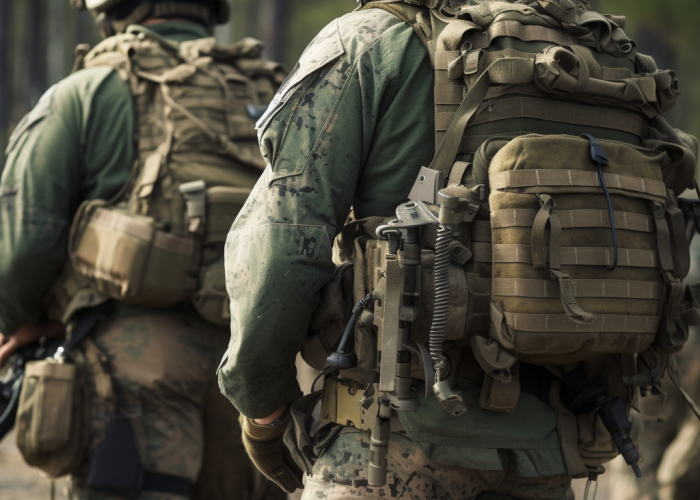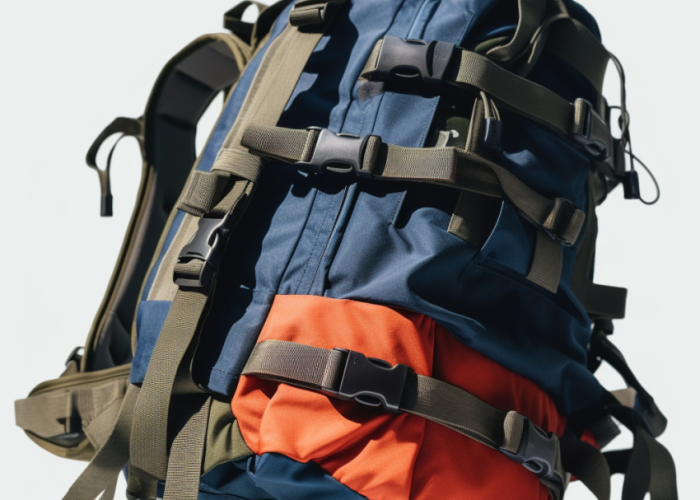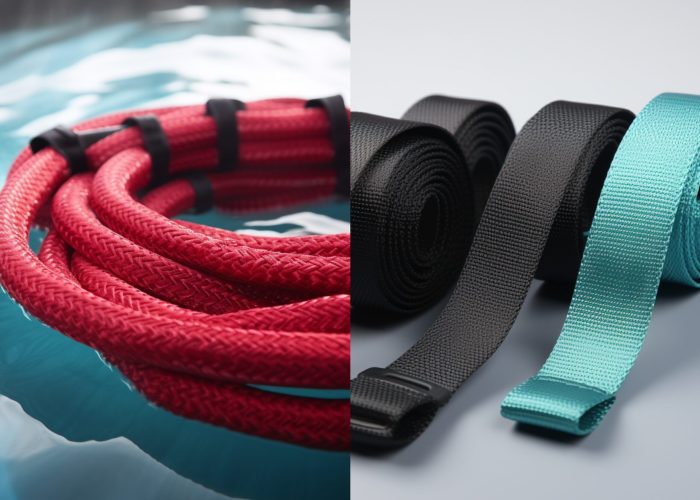From our years manufacturing MIL-SPEC compliant webbing for defense contractors, we’ve seen how material selection can make or break mission-critical equipment performance. Nylon webbing consistently outperforms alternatives in the demanding conditions where tactical gear must function flawlessly.
Nylon webbing is essential for military and tactical gear because it delivers superior tensile strength exceeding 2,000 lbs, maintains structural integrity from -40°F to +160°F, resists UV degradation and chemical exposure, and meets stringent MIL-W-4088 defense specifications required for field deployment.
Discover why nylon webbing stands out with strength data, environmental resistance, and compliance insights to support informed, performance-driven material choices.


Webbing manufacturing expert with 15+ years of experience helping product developers build high-performance straps for industrial, medical, and outdoor use.
Nylon webbing outperforms other materials in military use by combining 2,000–3,500 lbs tensile strength with excellent abrasion resistance and elastic recovery under stress. Its polyamide structure resists fatigue and retains flexibility, unlike polyester or cotton, which degrade more rapidly under dynamic loads or harsh environmental exposure.
Standardized tensile testing shows nylon webbing delivers 35% higher strength than polyester and up to 300% greater durability than cotton. Abrasion tests record over 10,000 wear cycles before failure, far exceeding polyester’s 3,000-cycle threshold. After 1,000 simulated field load cycles, nylon retains 95% of its original strength, while polyester retains only 78%.
From our manufacturing experience, nylon remains the preferred material for tactical vests, parachute harnesses, and vehicle tie-downs. It withstands flexing, moisture, and temperature fluctuations common in field deployments—conditions that cause polyester and cotton webbings to weaken or fail prematurely.
Nylon webbing reliably complies with MIL-W-4088 and similar military-grade specifications without additional treatment—making it field-ready by default, unlike most polyester variants.
For mission-critical applications, specify nylon webbing with a minimum 2,000 lb break strength and solution-dyed finishes for UV resistance. We provide technical consultation to match webbing specs to exact operational demands—ensuring reliability without excessive material costs.
Nylon webbing delivers 15–20% weight savings over polyester while offering superior strength, weighing just 0.8–1.2 oz per linear foot with 2,500+ lb breaking strength. Its high strength-to-weight ratio makes it ideal for tactical and load-sensitive applications.
Nylon achieves a 3,200 lbs/oz strength-to-weight ratio, outperforming polyester (2,400 lbs/oz) and cotton (800 lbs/oz). A standard tactical vest using nylon saves 2–3 oz compared to polyester—an advantage in field gear design where weight directly affects endurance.
This weight efficiency allows designers to reallocate saved weight to critical components like ballistic plates or communication systems. We’ve seen military procurement increasingly favor nylon for its strength-per-ounce advantage.
MIL-W-4088 Type III nylon remains the benchmark for airborne and field gear requiring both strength and low weight.
For maximum efficiency, specify Type III nylon webbing. We can calculate exact weight reductions across your full equipment set.

Nylon webbing retains structural performance from -40°F to +160°F, withstanding UV, moisture, and chemical exposure better than cotton and untreated polyester. Its 4% moisture absorption minimizes swelling and strength loss, unlike cotton’s 25% uptake.
Accelerated weather testing shows nylon maintains 90% of tensile strength after 1,000 hours of UV exposure, while untreated polyester drops by 35%. Nylon also resists fuel, oil, and solvent contact without degrading, and remains flexible at freezing temperatures.
Our manufacturing experience across desert and arctic deployments confirms nylon’s reliability under thermal shock, UV intensity, and environmental abrasion—conditions where alternative materials fail early.
Solution-dyed nylon complies with ASTM D4329 for weathering, ensuring stable long-term outdoor use.
For gear exposed to extreme conditions, specify solution-dyed nylon with certified UV stabilizers. We offer verified performance data tailored to your operational environment.
Nylon webbing meets key military specifications, including MIL-W-4088 Type III (≥2,000 lb breaking strength, 15–20% elongation) and MIL-DTL-32439 for synthetic fiber webbing. It also qualifies under the BERRY Amendment for U.S. sourcing compliance.
Testing confirms nylon webbing exceeds MIL-W-4088 thresholds with 2,500–3,500 lb strength and ±3% width tolerance. The 15–20% elongation range maintains gear stability under dynamic loads without over-flexing.
Unlike polyester, which may require post-processing to pass, nylon consistently meets these specs without modification—streamlining procurement and accelerating project approval.
We also support ISO 9001-certified production and provide full traceability for defense audits and supply chain validation.
For defense contracts, specify MIL-W-4088 Type III, BERRY-compliant nylon webbing with test reports and domestic origin documentation available on request.

Nylon webbing is the standard for MOLLE systems due to its consistent 1-inch width, high abrasion resistance, and ability to withstand 25,000+ attachment cycles without failure. It delivers the flexibility and surface smoothness needed for secure modular attachment.
MOLLE testing shows nylon outperforms polyester, which often fails after just 8,000 cycles. Nylon’s stable dimensions and controlled elongation prevent shifting and binding, ensuring reliable load carriage and quick-release functionality.
Our production experience confirms: poorly spec’d webbing leads to fit issues, premature wear, and gear rejection. Type III nylon matches MOLLE requirements in tensile strength, weave density, and surface finish.
For plug-and-play MOLLE compatibility, specify 1-inch Type III nylon webbing with tight width control and proven abrasion performance. Pre-qualified options available to accelerate your development and reduce testing delays.
Nylon webbing resists the top failure modes seen in field gear: abrasion wear-through, UV cracking, and moisture-induced weakening. Its polyamide structure delivers consistent strength under cyclic loading—conditions where cotton and untreated polyester often fail.
Field testing shows:
Our failure analyses confirm most webbing breakdowns are due to poor material choice—not design flaws. Nylon outperforms in humid, high-sun, or load-cycling scenarios.
MIL-W-4088 testing covers all key failure modes. To prevent premature breakdown, specify solution-dyed nylon webbing with edge reinforcement. We provide failure risk assessments to ensure mission-ready performance.
Military-grade nylon webbing is produced under ISO 9001-certified processes with precise weaving, heat-setting, and continuous testing to meet MIL-W-4088 Type III standards. Every production run includes dimensional checks, tensile verification, and colorfastness testing.
Compliance measures include:
Military procurement audits require full documentation and performance consistency. From raw resin to final roll, each step is logged and certified.
Our facility maintains test records, fiber origin certifications, and MIL-SPEC qualification data—ready for immediate submission.
For compliant nylon webbing, choose ISO 9001 suppliers with BERRY sourcing and a history of military approvals. We support your procurement with verified documentation and expedited compliance reporting.
Nylon webbing proves essential for military and tactical gear through superior strength, environmental resistance, and reliable MIL-W-4088 compliance. Solution-dyed nylon webbing delivers optimal performance across extreme conditions while meeting defense procurement standards. We provide ISO 9001-certified manufacturing and engineering consultation to optimize your tactical gear specifications with proven nylon webbing solutions.
Yes. Type III nylon meets MOLLE standards with consistent 1″ width, controlled elongation, and over 25,000 insertion/removal cycles without performance loss.
Yes, when manufactured in the U.S. using domestic materials and labor. Full traceability ensures compliance for defense contracts requiring domestic sourcing.
MIL-W-4088 Type III nylon webbing supports 2,500–3,500 lbs breaking strength, with a minimum of 2,000 lbs required. For safety, working loads should stay within 20% of rated strength in tactical use.
Solution-dyed nylon retains up to 90% strength after 1,000 hours of UV exposure and typically performs reliably for 5–10 years, depending on use conditions and environmental stressors.
Nylon delivers 35% higher tensile strength, 3× better abrasion resistance, and superior cold-weather flexibility. While polyester is more economical, nylon offers greater reliability for mission-critical use.
Costs depend on spec grade, order volume, and compliance requirements. Though 15–20% more costly upfront than polyester, nylon reduces total lifecycle cost through longer service life and fewer field failures.